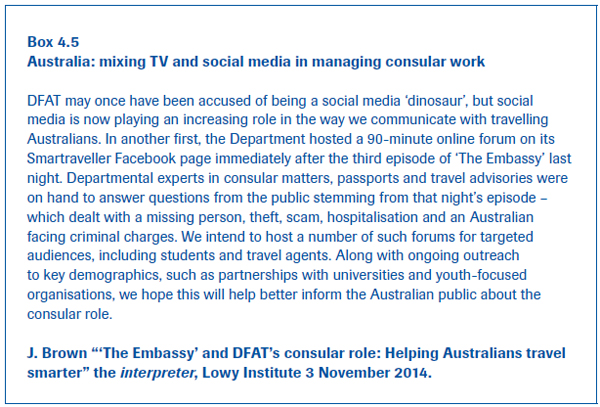Diplomacy in the Digital Age
- By Brian Hocking and Jan Melissen
 0 Comment(s)
0 Comment(s) Print
Print E-mail China.org.cn, October 26, 2015
E-mail China.org.cn, October 26, 2015
|
|
Diplomatic structures in the digital age
Digitalization does not change the fundamental functions of diplomacy, but the texture of diplomacy is undergoing significant change. We have interpreted this in terms of our 'integrative diplomacy' model. The impact of developments in ICT has to be seen in the context of these broader evolutionary trends, and as a constituent part of a changing landscape in which diplomatic tools are reconfigured to meet the demands of changing processes (see the statement from the Stockholm Initiative for Digital Diplomacy, Box 4.6). This reshaped environment poses significant issues for the machinery of diplomacy at all levels – from multilateral agencies to the familiar forms of national diplomacy. The debate joins a long-running dialogue concerning the relevance of the foreign ministry in a policy milieu where the character of 'foreignness' is problematic. The utility, shape and functions of the network of diplomatic posts in an interdependent world are equally questioned. Clearly, digitalization complicates this argument: it can either be seen as lending strength to the 'diplomatic skeptics' for whom the logic of the MFA and diplomatic representation seems weak, or as a significant resource in reasserting their relevance.




Go to Forum >>0 Comment(s)